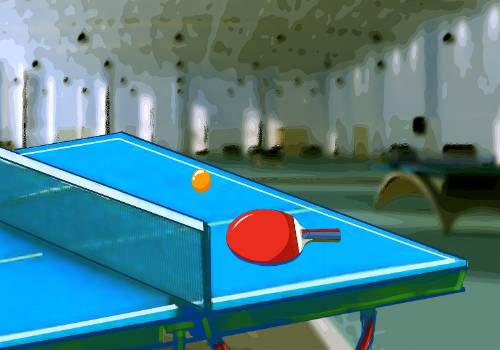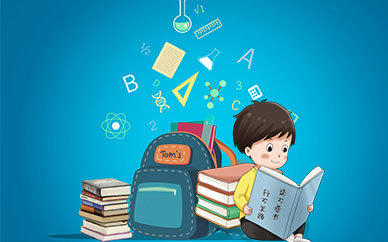滑動查看中文
In Chapter 4 of Purposeful Play, the Early Years team explored how to cultivate empathy in our young learners. They explored two different aspects of empathy which are understanding emotions and perspective taking.
 (資料圖片僅供參考)
(資料圖片僅供參考)
To help students understand emotions, it is important to provide opportunities for them to interact and bond with others to develop their emotional vocabulary so that they can then identify emotions in others.
Perspective taking develops when students engage socially and begin to understand the different perceptions and experiences of others.
Our teachers and TAs worked in their grade level teams along with our specialist teachers to reflect on how they are already helping students to develop these skills. It was wonderful to hear all the strategies and learning experiences they are intentionally planning to help students develop empathy. They then had the opportunity to identify and plan for an area of empathy that they can further help students develop in their class.
How is empathy developed in
our Early Years classrooms?
#
Empathy in K3
Students are challenged during lessons with different activities: group activities, individual projects and challenging lessons. This can bring a variety of emotions based on the outcome of their work. Students may show euphoria, boredom, frustration or sadness.
These activities challenge how students deal with all these emotions and how they support one another through them. During these lessons I encourage students to cheer each other on to conquer the challenges they face. They might hug or comfort a student facing disappointment. They are encouraged to use language of a supporting nature of students work and in their own by asking questions like "Do you like your work?" "As long as you like it then it is wonderful.”
Students turn the dial to show how Milo the Mouse feels when this happens.
Children love stories and they can relate to the characters. When we ask follow up questions, we give students opportunities to make connections with how they feel and how others might feel.
#
Empathy in K4
Emotion coaching: Before we talk about the problems, we show understanding about their feelings first. We want to listen, and we want to be heard too.
Capturing the moments that arise in daily life and bringing them into class discussion. Students will see the issue with fresh eyes and have a good chance to understand others and to be understood by others.
We learn the words: please, thank you. Are you ok? Even if we don"t have a lot of empathy at that moment, we can learn what, when, and how to show empathy.
The K4 team would like to create the colour zone. “I am in the red zone. I need to take some time", and give students space in a designated quiet place in the classroom. When our feeling zone moves to yellow or green, that is okay because our feelings are valid. We are learning what we can do and what we can"t do.
#
Empathy in K5
Students role play different scenarios to help them take the perspective of others. They practice using an “I message” to help with problem solving.
During our Wednesday collaboration time, we came up with a game that will help students better identify emotions in others. The game started with the teacher, and then the children, picking an object and describing what that object would say in a certain situation that was modeled.
For example: What would a chair say if a person sat down really hard on it? It would say, "ouch, you hurt me." We will later extend this activity to recognizing the emotions of people by using pictures and having the children connect the emotion that the objects felt to a picture of a person feeling the same way.
#
Creative Arts
Students are developing empathy as they deepen their understanding of emotions and use puppets to take on different perspectives.
#
Physical Education
Our PE classes can be very active and sometimes competitive. In PE we role play different scenarios that usually occur when playing a game or activity. We look at how our actions (sometimes accidents!) and behaviors can impact our classmates" emotions. We discuss and practice how we can show empathy (be caring) to those being impacted.
What do our teams want you to
know from this chapter?
K3
Team
Our job is not to shield children from emotions but to help them process them in healthy ways. Part of this work is helping children understand what their own emotions feel like, what they can do to manage their feelings, and how to use this knowledge to read faces and understand what others might be feeling. (Purposeful Play p. 55)As parents and educators, it"s tempting to protect children"s innocence. We want the best for them. We love hearing laughter and seeing smiles. We hate seeing them cry and get frustrated. We want to minimize how often [TT1]children face difficulties.
But working through challenges helps children grow. We can model appropriate ways to respond when we feel angry, upset, or sad. We can talk about how we feel and discuss what we can do about it. We can encourage our children to consider how others might feel and how they can respond.
In K3, we want students to manage their emotions and be aware of the emotions of others. We read books and talk about things that happen in the classroom. Doing this at home will continue to nurture empathy and encourage children to be caring people in the world.
K4
Team
How are you feeling today? We normally would say “I am good”. Can we always be good and happy? K4 talked a lot about feelings here at school. We had really great debates about why some feelings are bad and that all our feelings are ok to feel. We want you to ask about all these comments:
“Don’t cry. Here’s a candy”
"I"ll get you a balloon”
“Nothing to be scared about.”
“Big boys don’t cry”
“You can’t get mad for that”
“You are ok"
"You are not sad”
“You should be happy for that”
What are your thoughts about them? We hear or use these words a lot, but let’s think about it. Do we need to try to distract children from feeling sad? If I am sad, why do I need to be distracted by something to forget that? Can we control someone else’s feelings? We all have our own feelings. We want children to feel.
I can be angry or sad because I care so much about...
I can take my time to be sad. I won"t be sad forever.
I feel what I feel, and I know it. Let"s work as a team to enable children to be themselves and feel what they feel. We want them to know they have their own feelings. This will also help our children to know themselves, others and appreciate who they are.
K5
Team
It is good to model feelings and emotions at home so that children can learn how to express their emotions and identify emotions in others in order to become empathetic. It is okay to feel each emotion and talk about them and hear other"s perspectives to develop empathy. Don"t try to hinder or redirect your child to feel a different way. It is ok for children to feel sad, angry or upset. The idea is for children to learn how to work through their emotions.
An example would be talking through the emotion or telling the child that you can understand why they feel that way. Play also gives children exposure to their peers" feelings and emotions. It will help children face problems throughout life. Empathy needs to be developed at home and at school.
PE
PE can be fun, energetic, competitive and sometimes frustrating. Each student develops (especially at a young age) differently.
It is so important that students practice empathy through various methods like: role play, reading emotions on faces or body language, steps of recognizing and offering support/ understanding to those in need. It is easy to forget all of these things when engaged in a fun game, but the more we practice and reflect on our actions, the more natural empathy will come to our students.
Slide to English
在《目的性游戲》第四章中,幼兒教學團隊探討了如何培養幼兒學生的同理心。他們探索了同理心的兩個不同方面,即理解情緒和換位思考。
幫助學生理解情緒,重要的是要為他們提供與他人互動和建立聯系的機會,以發展他們的情緒詞匯,以便他們能夠識別他人的情緒。
當學生參與社交并開始理解他人的不同看法和經歷時,就會發展換位思考能力。
我們的教師和助教在他們年級團隊中與我們的專業教師一起工作,反思他們為了幫助學生發展這些技能所做的工作。我們很高興聽到他們計劃幫助學生培養同理心的所有策略和學習經驗。然后他們確定規劃一個能進一步幫助學生在課堂上發展同理心的地方。
我們如何在幼兒園課堂
培養同理心?
#
K3
學生在課程中接受不同活動的挑戰:小組活動、個人項目和具有挑戰性的課程。這個過程會根據他們的挑戰結果產生各種情緒:學生可能會表現出欣快、無聊、沮喪或悲傷。
這些活動挑戰學生如何處理所有這些情緒以及他們如何通過這些情緒相互支持。在這些課程中,我鼓勵學生們在克服面臨的挑戰時,互相為彼此鼓舞。他們可能會擁抱或安慰失望的學生。我們鼓勵他們使用支持性的語言,像這樣提問:“你喜歡你的作品嗎?”“只要你喜歡,那就是美妙的。”
學生們轉動表盤來顯示當這發生時米老鼠的感受。
孩子們喜歡故事,他們能與人物產生共鳴。當我們提出后續問題時,我們讓學生有機會將他們的感受和其他人的感受聯系起來。
#
K4
情緒指導:在我們談論問題之前,我們首先表現出對他們感受的理解。我們想傾聽,我們也想被傾聽。
捕捉日常生活中出現的瞬間并將它們帶入課堂討論。學生將以全新的眼光看待問題,并有很好的機會去理解他人和被他人理解。
我們學習詞句:請,謝謝。你還好嗎?即使我們在那一刻沒有太多的同理心,我們也可以學習何時如何表現出怎樣的同理心。
K4團隊想要創建顏色區域來表達。我在紅區。我需要靜靜”,并在教室指定的安靜的地方給學生空間。當我們的感覺區變成黃色或綠色時,沒有關系因為我們的感覺仍然是有效的。我們正在學習我們可以做什么以及我們做不到的。
#
K5
學生角色扮演不同的情景,幫助他們從他人的角度出發。他們練習使用“我信息”溝通法來幫助解決問題。
在我們的周三合作時間,我們創造了一個游戲,可以幫助學生更好地識別他人情緒。游戲從老師開始,然后是孩子們,他們選擇一個對象并描述該對象在模擬的特定情況下會說什么。
例如:如果一個人真的用力坐在椅子上,椅子會說什么?它會說,“哎喲,你傷到我了。” 稍后我們會將此活動擴展到通過使用圖片來識別人們的情緒,并讓孩子們將物體感受到的情緒與具有相同感受的人的圖片聯系起來。
#
創意藝術
學生在加深對情緒的理解并使用木偶呈現不同的觀點時,正在培養同理心。
#
體育
我們的體育課非常活躍,有時甚至競爭激烈。在體育課中,我們角色扮演通常在玩游戲或活動時發生的不同場景。我們看看我們的行為(有時是意外!)和行為如何影響同學的情緒。我們討論并練習如何向受影響的人表示同情(關懷)。
我們的幼兒教學團隊希望
您從本章中了解到什么?
K3
教學團隊
我們的工作不是保護孩子不受情緒影響,而是幫助他們以健康的方式處理情緒。其中一部分是幫助孩子們了解他們自己的情緒是什么感覺,他們可以做什么來管理自己的情緒,以及如何使用這些知識來感知他人情緒并理解他人的感受。(目的性游戲第55頁)
作為父母和教育者,我們通常禁不住保護孩子的天真;我們想要最好的給他們;我們喜歡聽到笑聲看到微笑;我們討厭看到他們哭泣和沮喪;我們希望盡量減少兒童面臨困難的頻率。
但是克服挑戰有助于孩子成長。當我們感到憤怒、沮喪或悲傷時,我們可以模擬適當的反應方式。我們可以談談我們的感受,并討論我們可以做些什么。我們可以鼓勵孩子考慮其他人的感受以及他們的反應。
在K3,我們希望學生能夠管理自己的情緒并了解他人的情緒。我們讀書,談論課堂上發生的事情。在家里這樣做將繼續培養孩子同理心,并鼓勵他們成為有愛心的人。
K4
教學團隊
你今天感覺如何?我們通常會說“我很好”。我們會永遠快樂嗎?K4學生在學校學習談論了很多感受。關于為什么有些感覺不好,我們進行了激烈辯論,所有感覺都是可以感知的。我們希望您能思考一下以下這些說法:
“別哭,給你一顆糖”
“給你一個氣球”
“沒什么好害怕的”
“大男孩不哭”
“你沒必要感到生氣”
“你很好”
“你不難過”
“你應該為此感到高興”
您對此有什么看法?我們經常聽到或使用這些話語,但是讓我們想一想,我們真的需要設法分散孩子感到難受的注意力嗎?如果我難過,為什么我需要分散注意力去忘記它?我們能控制別人的感受嗎?我們都有自己的感受,我們希望孩子們也能感受到。
我可能會生氣或難過,因為我非常關心……
我可以傷心一會,但我不會永遠悲傷。
我感受到我的感受,并且我知道自己的感受。讓我們一起合作,讓孩子們做自己,感受他們的感受。我們希望他們知道他們有自己的感受。這也將幫助我們的孩子們了解自己和他人,并欣賞自我。
K5
教學團隊
最好在家里模擬感受和情緒,這樣孩子們就可以學習如何表達自己的情緒和識別他人的情緒,從而變得善解人意。感受每一種情緒并談論它們,聽取他人的觀點以培養同理心是可以的。不要試圖阻礙或引導您的孩子去感受不同的方式。孩子感到悲傷、憤怒或不安是正常的。這個想法是讓孩子們學習如何處理他們的情緒。
一個方式是通過情緒說話或告訴孩子你可以理解他們為什么會有這種感覺。玩耍還可以讓孩子接觸到同齡人的感受和情緒。它將幫助孩子在成長過程中面對問題。我們需要在家里和學校培養同理心。
PE
體育課可以是有趣的、充滿活力的、有競爭力的,但有時也會令人沮喪。每個學生的發展(尤其是在年幼時)都不同。
學生通過各種方法練習同理心非常重要,例如:角色扮演、閱讀面部或肢體語言的情緒、識別并向有需要的人提供支持/理解的步驟。在玩有趣的游戲時很容易忘記所有這些事情,但我們練習和反思自己的行為越多,我們的學生就會越自然地產生同理心。
關鍵詞: 深圳幼兒園



















 營業執照公示信息
營業執照公示信息